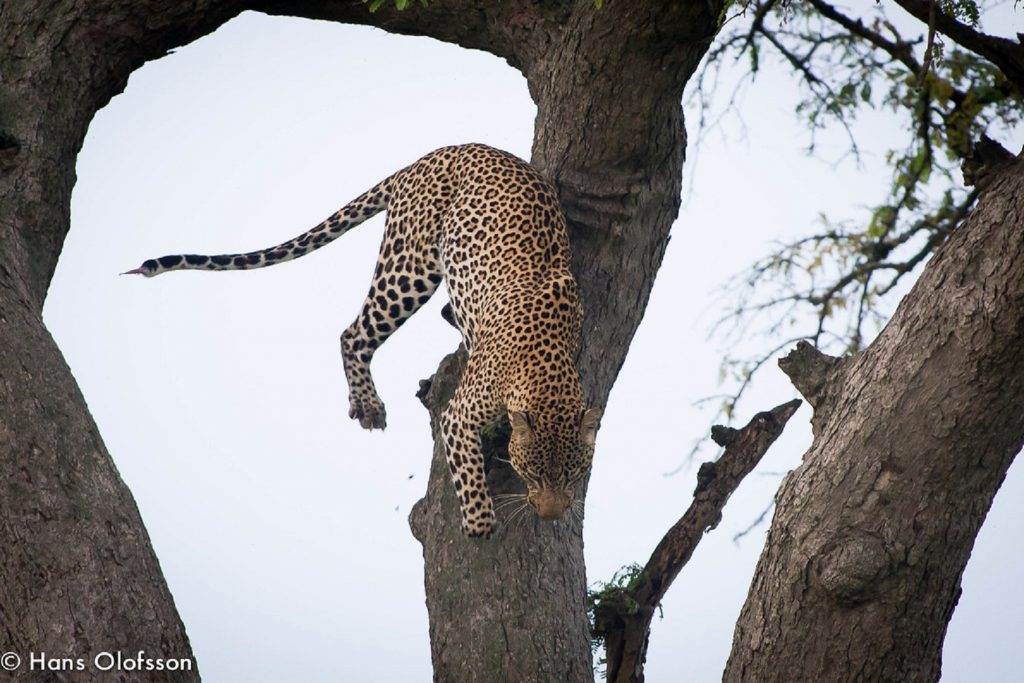There is a guarantee to see a number of big game, primates, and bird species in Queen Elizabeth National Park. With an astonishing 5,000 hippos, 2,500 elephants, and over 10,000 buffaloes thriving in its grasslands and shorelines, Queen guarantees sightings of some of Africa’s most iconic species.

Hearing the elephants’ calls reverberate around Queen’s crater-filled valleys is a magical experience.
Other common herbivores include warthogs, waterbucks, Uganda kobs, and topi, as well as the sitatunga antelopes.
Queen Elizabeth National Park’s most elusive inhabitants are its felines; lions, leopards, civet, genal, and serval cats. Lions are found throughout the park, but the most renowned tree-climbing lions live in the southern sector of Ishasha.
Solitary leopards are nocturnal and fiendishly well-camouflaged, so making a glimpse of them is more rewarding. The smaller cats are also predominantly nocturnal and best spotted on night game drives.
Primates found at Queen Elizabeth National park
About ten (10) primate species enjoy the park’s diverse habitats. The most popular of which is undoubtedly the chimpanzees. Vervet and black-and-white colobus monkeys are easily spotted in the trees, but the boldest of all are the baboons. So, be sure to keep your car windows closed to avoid food thefts.
Birds Species – Part of Big Game, Primates, and Bird Species
Birding in Queen Elizabeth National Park is an incredible treat since it contains a variety of habitats. These range from savanna to wetlands and lowland forest bird species. This diversity is reflected in the list of over 600 bird species, the biggest of any protected area in East Africa. A majority of birds found in this area are regarded as famous birds of East Africa and are a must-see for birdwatchers in Africa.
Visitors to Queen Elizabeth National Park always complement their visit with a gorilla trekking safari in the nearby Bwindi Forest National Park or a chimpanzee trekking expedition in Kibale National Park. Others could opt for a boat cruise on the Victoria Nile to Murchison Falls.
